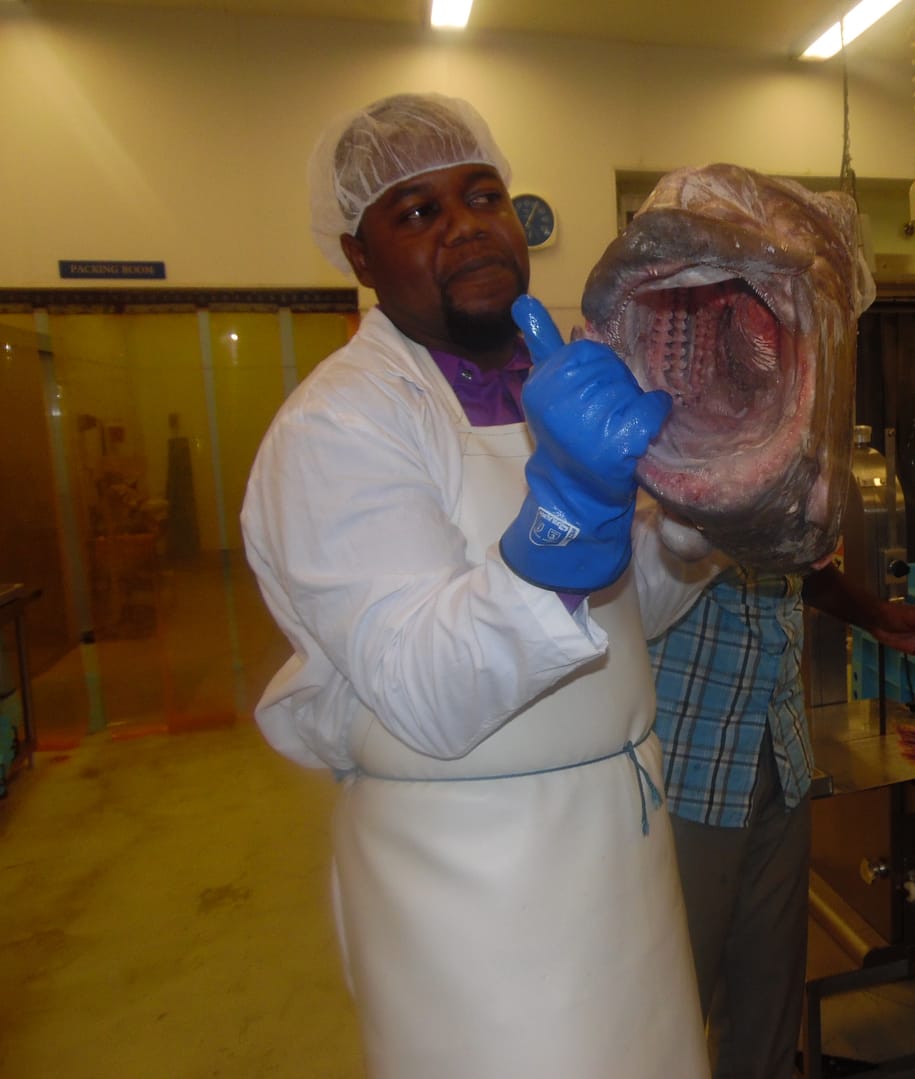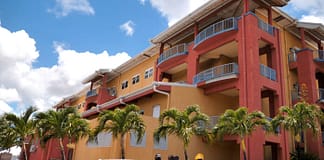
The important role that the Processing Unit at the Fisheries Division at Point Wharf plays in the overall promotion of food safety and sustainability was further highlighted by Manager Mr. Wesley Simon earlier this week.
Simon said that for those who might not know about the existence of this facility tucked away at the Point Wharf, doing business with members of the public, including hotels and restaurants is almost constant.
He however made it clear that there are certain strict procedures that must be followed in the processing of seafood for both local consumption and export.
When the fishes are brought in, they are inspected by first having their temperature taken to ensure that it is not above -4°C. If such is the case, then the officers can refuse the commodities as they run the risks of going bad.
Also on arrival, the fish must be weighed to verify the portion delivered to avoid any discrepancy on collection of the processed goods.
However, Simon said that the portion of fish brought for processing should be 20 lbs and up due to the process involved in cleaning them,.
After the fishes are inspected, they are taken into the Processing Unit where they are gutted, scaled and sliced, if requested, and then placed in cold storage for distribution/collection. The ministry’s Communications Unit was very lucky to witness a worker slicing the fish. An impressive sight was watching him slice the head of a huge fish which weighed about 90 pounds.
Apart from doing business with the public, the Processing Unit is also engaged in the business of selling fish.
During the tour of the facility, Mr. Simon stressed the importance of ensuring that the processing unit remains sanitary at all times.
“The processing unit is sanitized three (3) times a week and steamed once a week.” Workers also make constant use of foot baths and constantly washing their hands with treated water. Your hair must also be properly covered, no jewelry whatsoever and you should be properly attired with boots etc,” Simon noted,
At the Processing Unit at the fisheries Division, fish/seafood are distributed to hotels, restaurants, residents and vendors who utilize the services of the unit.
Meanwhile Mr. Simon reminded all those involved in fishing or the selling of fish to be mindful of the Closed Season for fisheries resources.
The Closed Seasons for Lobster and Chub (Parrot Fish) are now in effect. Lobster- May1st – June 30th and Chub- May 1st – July 31st.
Persons found in possession of same can end up facing serious consequences.
During the tour, Mr. Larique Hackshaw, Fisheries Officer for Economic Trade and marketing stated that the unit exports seafood to places as far as Japan and Hong Kong and as close as Guadeloupe and St. Martin which mainly demand lobster.
Among the services offered by the Processing Unit are slicing, vaccum seal, seal, blast freeze and they also smoke fish.
The plant operates using the guidelines of HACCP- Hazard Analysis and Critical Control Points.
Hazard Analysis Critical Control Points (HACCP) is an internationally recognized method of identifying and managing food safety related risk.
Advertise with the mоѕt vіѕіtеd nеwѕ ѕіtе іn Antigua!
We offer fully customizable and flexible digital marketing packages.
Contact us at [email protected]

















HACCP dose not start at receiving the seafood.
Saying they are using HACCP standards is one thing application is another.
If what I have read is correct someone at that department should do a course in HACCP …..
Comments are closed.